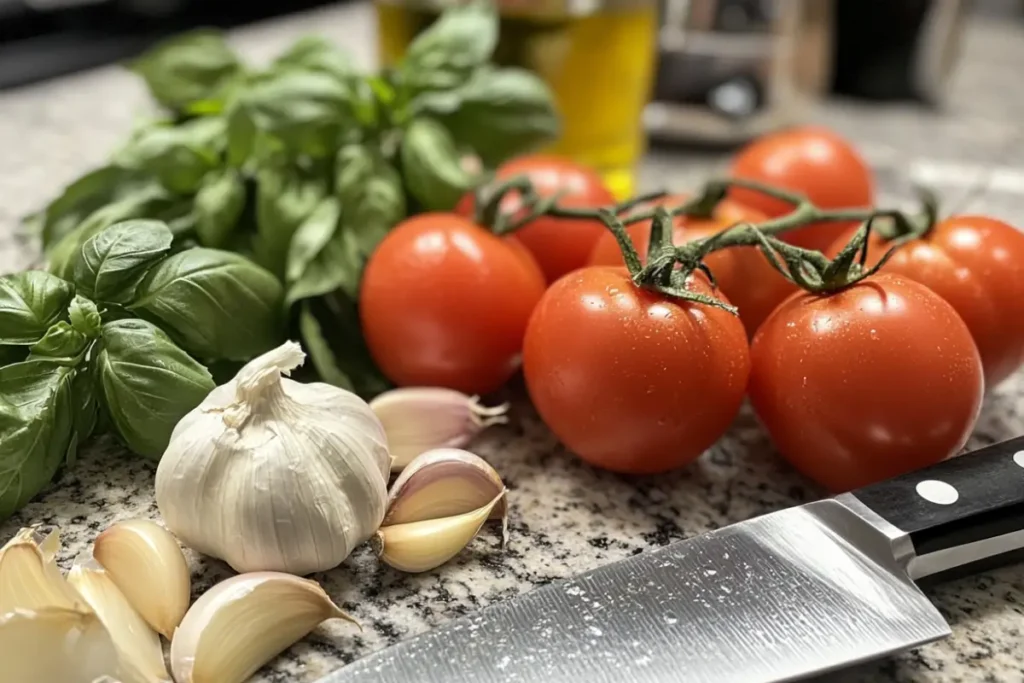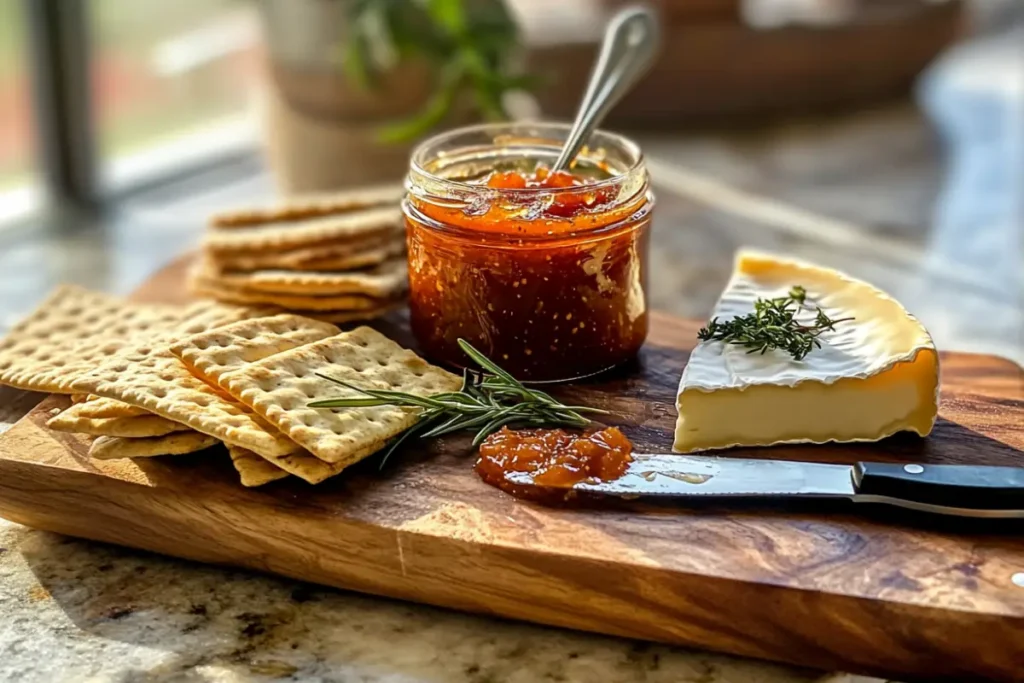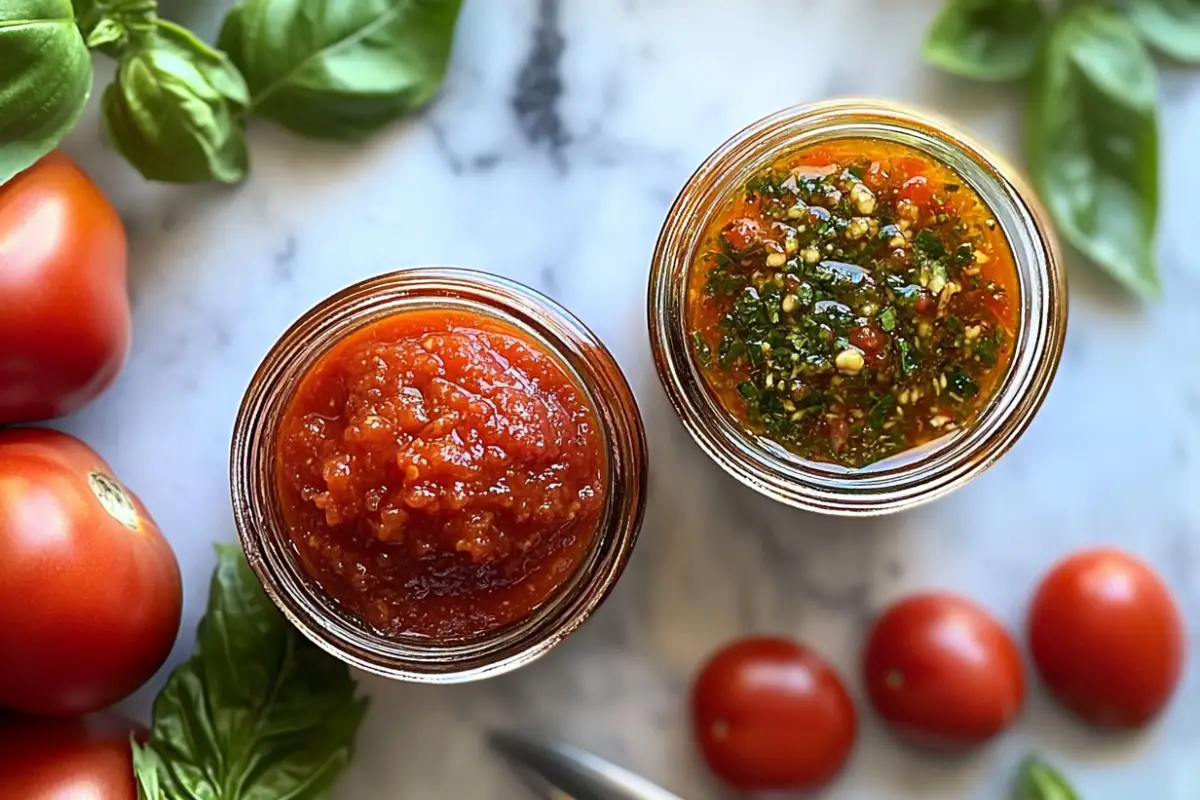Last Updated on February 14, 2025 by Souhail
When it comes to versatile tomato-based condiments, tomato sauce and tomato jam stand out for their unique flavors, textures, and culinary applications. While they both stem from the same humble fruit (yes, tomatoes are technically fruits!), their differences are vast in terms of preparation, ingredients, consistency, flavor profiles, and uses. If you’ve ever wondered whether you can swap one for the other or why you might choose one over the other, this detailed exploration has you covered.
Table of contents
What Sets Tomato Sauce and Tomato Jam Apart?
At first glance, tomato sauce and tomato jam might seem interchangeable. Both involve cooked tomatoes and share the same deep red hue, but that’s where the similarities end. The two are crafted with different techniques, serve distinct purposes, and offer wildly different tastes. Let’s break it down step by step.
1. Ingredients: Sweet vs. Savory

The biggest difference lies in the ingredients and seasoning:
- Tomato Sauce:
Tomato sauce typically relies on savory ingredients. You’ll find a base of tomatoes enhanced by garlic, onions, olive oil, herbs (like basil or oregano), and spices such as black pepper or chili flakes. Sugar may be added, but only sparingly, to balance the natural acidity of the tomatoes. - Tomato Jam:
Tomato jam is a sweet and tangy condiment. While tomatoes remain the star, they’re combined with sugar (and sometimes brown sugar) to amplify the natural sweetness. Ingredients like vinegar, ginger, cinnamon, cloves, or even a touch of chili powder are added for complexity. The result is a jammy, almost caramelized spread with sweet, savory, and tangy notes.
Key takeaway: If you’re craving sweetness, tomato jam is your go-to, while tomato sauce leans savory and earthy.
2. Consistency: Smooth vs. Chunky
- Tomato Sauce:
Tomato sauce tends to have a smoother, thinner consistency, ideal for pouring over pasta or using as a base in stews. The tomatoes are often pureed or strained, leaving a velvety finish. - Tomato Jam:
Tomato jam is thick, sticky, and spreadable. It often retains chunks of tomato, giving it texture. This rustic quality is what makes it perfect for spreading on bread, pairing with cheese, or dolloping on a charcuterie board.
Pro tip: If texture matters in your dish, tomato sauce works better for smoother applications, while tomato jam brings a bold, chunky contrast.
3. Cooking Method and Time
The preparation processes differ significantly:
- Tomato Sauce:
Making tomato sauce is generally quicker, involving simmering tomatoes with herbs and spices until they reach the desired consistency. It’s ready to use in as little as 30 minutes. - Tomato Jam:
Tomato jam takes a longer time to cook, often an hour or more. The tomatoes are slow-cooked with sugar and spices, allowing the flavors to intensify and caramelize. This lengthy cooking time is what gives tomato jam its thick, jammy texture and rich, concentrated taste.
4. Flavor Profile: Bold vs. Balanced
- Tomato Sauce:
The flavor of tomato sauce is more balanced, with the tanginess of the tomatoes shining through alongside earthy herbs. It’s savory with a hint of freshness, perfect for Italian-inspired dishes. - Tomato Jam:
Tomato jam is bolder and more complex, offering a sweet-tart flavor that dances between fruity and umami. It has a depth of flavor that’s both unexpected and irresistible.
Tip: Think of tomato jam as a condiment you might use sparingly to enhance flavors, while tomato sauce is an essential base for hearty dishes.
5. Culinary Uses and Versatility
The applications of tomato sauce and tomato jam differ greatly in the kitchen:
- Tomato Sauce:
Tomato sauce is a staple in Italian, Mediterranean, and American cuisines. It’s used as a base for pasta sauces, pizza toppings, and soups. It’s versatile but leans exclusively savory. - Tomato Jam:
Tomato jam shines as a condiment. Spread it on toast, serve it alongside roasted meats, pair it with cheeses, or use it as a topping for burgers or sandwiches. Its sweet-savory flavor lends itself to more creative, non-traditional uses.
Fun fact: Tomato jam’s unique flavor profile makes it a conversation starter at dinner parties, while tomato sauce is a comforting classic.
Detailed Comparisons Summary
| Feature | Tomato Sauce | Tomato Jam |
|---|---|---|
| Flavor | Savory, earthy, herbaceous | Sweet, tangy, bold, and complex |
| Consistency | Smooth and pourable | Thick, chunky, and spreadable |
| Cooking Time | Quick (30–45 minutes) | Slow-cooked (1 hour or more) |
| Uses | Pasta, pizza, soups, casseroles | Toast, charcuterie, meats, burgers |
| Primary Ingredients | Tomatoes, garlic, onion, herbs | Tomatoes, sugar, vinegar, spices |
| Culinary Tradition | Italian, Mediterranean | American, fusion |
Can You Substitute One for the Other?
While both feature tomatoes, tomato sauce and tomato jam are not interchangeable. Their stark differences in flavor and texture mean using one in place of the other could drastically alter a dish. Imagine using sweet tomato jam in a lasagna—delicious but unconventional—or pouring tomato sauce over a croissant.
If you must substitute, consider the flavor adjustments needed. For example:
- Dilute tomato jam with water and adjust seasoning to create a sauce-like consistency.
- Add sugar and vinegar to tomato sauce, then cook it down for a quick faux tomato jam.
Why Do People Love Tomato Jam So Much?

Tomato jam has been gaining popularity among food enthusiasts, chefs, and home cooks alike—and for good reason. Its unique combination of sweet, savory, and tangy flavors sets it apart from traditional condiments. Here’s why people are so enamored with tomato jam:
1. Versatility in Pairings
Tomato jam’s versatility is one of its greatest assets. It complements both savory and sweet dishes, making it a favorite addition to meals across cuisines. Whether it’s dolloped on a burger, slathered over freshly baked bread, or served alongside roasted meats, tomato jam has the ability to transform an ordinary dish into something extraordinary. It’s equally delightful on a charcuterie board, paired with creamy cheeses like brie or tangy goat cheese, or spread over warm croissants for a gourmet breakfast treat.
2. A Gourmet Twist on Classics
Tomato jam offers a luxurious, gourmet touch that elevates even the simplest dishes. Spread it on a grilled cheese sandwich, and it instantly feels more sophisticated. Use it as a topping for scrambled eggs or an omelet, and breakfast becomes a restaurant-worthy affair. For those who love to entertain, serving tomato jam as part of a party spread is an easy way to impress guests with minimal effort.
3. A Play on Sweet and Savory
Unlike traditional fruit jams, tomato jam balances sweetness with a hint of savory depth, often accompanied by a slight spiciness from ingredients like chili flakes or ginger. This complex flavor profile is appealing to people who enjoy foods that don’t fit neatly into one category. It surprises the palate and keeps things interesting.
4. Perfect for Adventurous Palates
Tomato jam is a dream for foodies and adventurous eaters who love trying unconventional ingredients and combinations. It’s a step away from the predictable, offering something creative and unexpected.
5. Long Shelf Life and Homemade Appeal
When made at home, tomato jam can be stored for weeks in the refrigerator or even longer when canned properly. This makes it an excellent choice for people who enjoy preserving seasonal produce. Plus, the act of making tomato jam can feel satisfying and nostalgic, appealing to those who love creating homemade staples.
6. A Conversation Starter
Tomato jam’s uniqueness is often a talking point. Serve it at a dinner party, and guests are sure to ask, “What is this?” It’s an easy way to spark culinary curiosity and share the joys of exploring new flavors.
7. Healthier Sweetness
For those seeking alternatives to sugar-laden jams, tomato jam offers a slightly healthier option. With less added sugar than traditional fruit jams and the natural goodness of tomatoes, it’s a flavorful way to indulge in something sweet without overloading on empty calories.
In short, tomato jam is loved not only for its delicious taste but also for its versatility, creativity, and ability to bring excitement to everyday meals. It’s a condiment that surprises, delights, and leaves a lasting impression.
How to Choose Between Tomato Sauce and Tomato Jam
When deciding whether to use tomato sauce or tomato jam, the answer lies in the type of dish you’re making and the flavor profile you want to achieve. Let’s explore how to make the right choice:
1. Consider the Dish You’re Making
- Go with tomato sauce if you’re preparing a savory dish where tomatoes are the main base ingredient. It’s perfect for pasta, pizza, stews, and casseroles, where the smooth and tangy flavors of tomato sauce can complement other ingredients seamlessly.
- Choose tomato jam if you’re looking for a condiment to add a bold, sweet-tart kick. Tomato jam is excellent for breakfast, snacks, or as an accompaniment to meats and cheeses.
For example:
- A hearty lasagna demands tomato sauce.
- A cheeseboard with crusty bread screams for tomato jam.
2. Think About Flavor Needs
- Tomato Sauce: Offers a clean, savory tomato flavor with hints of herbs and spices. It’s versatile for dishes that require a neutral or herbaceous tomato base.
- Tomato Jam: Brings a sweet, tangy complexity that enhances flavor contrasts in a dish. Use it to balance salty or rich ingredients like prosciutto, aged cheddar, or roasted pork.
3. Texture Matters
- If your dish needs a smooth consistency, such as a pizza base or a soup, tomato sauce is your best bet.
- If you want chunky, spreadable texture, tomato jam delivers. It adds a rustic, artisanal feel that’s perfect for enhancing texture contrasts in dishes.
4. Use Case Scenarios
Here are some common use cases to guide your decision:
- Tomato Sauce:
- Toss it with pasta for a quick meal.
- Use it as a base for chili or curry.
- Spread it over pizza dough as a foundation for toppings.
- Tomato Jam:
- Add a spoonful to elevate a turkey or ham sandwich.
- Use it as a glaze for roasted chicken or pork.
- Pair it with soft cheeses for a snack or appetizer.
- Spread it on toast for a savory-sweet breakfast.
5. Think Beyond the Meal
Tomato sauce is typically cooked into dishes, while tomato jam often works as a finishing touch. If you need a foundational element to build upon, tomato sauce wins. If you’re adding a pop of flavor or a final flourish, tomato jam shines.
6. Nutritional Considerations
If you’re watching your sugar intake, tomato sauce may be a better option, as it generally contains less sugar than tomato jam. However, both can fit into a healthy diet depending on portion sizes and your overall dietary goals.
7. Explore Personal Preferences
Ultimately, the choice between tomato sauce and tomato jam comes down to personal preference. If you’re unsure, try both in different dishes and see which you prefer. You might even find yourself using tomato jam in ways you never expected—like stirring a small spoonful into a savory soup to add depth and sweetness.
With these factors in mind, choosing between tomato sauce and tomato jam becomes less daunting. Both have unique qualities that can elevate your cooking, and having both on hand in your kitchen will open up a world of culinary possibilities!
Frequently Asked Questions (FAQs)
Yes! Both can be frozen, though the texture of tomato jam may slightly change upon thawing. Store them in airtight containers and use within 3 months.
Tomato jam is typically served as a spread, often paired with bread, crackers, or cheese. It’s also used as a glaze for meats or as a gourmet topping for burgers.
It depends. Tomato sauce usually contains less sugar, making it lower in calories. Tomato jam, with its added sugars, is more calorie-dense but still offers the nutritional benefits of tomatoes.
Tomato jam pairs beautifully with charcuterie boards, roast chicken, grilled cheese sandwiches, or even desserts like savory tarts.
Not at all! While it takes a bit more time than tomato sauce, the process is straightforward. Slow cooking and a good balance of sugar and vinegar are key.
Yes, specialty grocery stores and online retailers often sell tomato jam. However, homemade versions allow for customization of sweetness and spice.
Final Thoughts
While tomato sauce and tomato jam share a tomato base, their differences in flavor, texture, and uses make them unique culinary staples. Tomato sauce is a savory, versatile classic, perfect for hearty meals like pasta and casseroles, while tomato jam adds a sweet-tart complexity that elevates snacks, cheeses, and meats. Knowing which to use—and when—can transform your cooking and add depth to your dishes.
If you’re curious to experience the magic of tomato jam firsthand, why not try making it at home? Check out our recipe article, The Best Homemade Tomato Jam Recipe: A Flavor Explosion, and discover how easy it is to create this irresistible condiment from scratch. You’ll be amazed by its bold flavor and endless versatility!
So whether you’re making a comforting Italian meal or looking for a creative topping for your next cheese platter, having both tomato sauce and tomato jam in your kitchen arsenal ensures you’ll always have the right ingredient for the job. Give them both a try and see how they can enhance your cooking!

